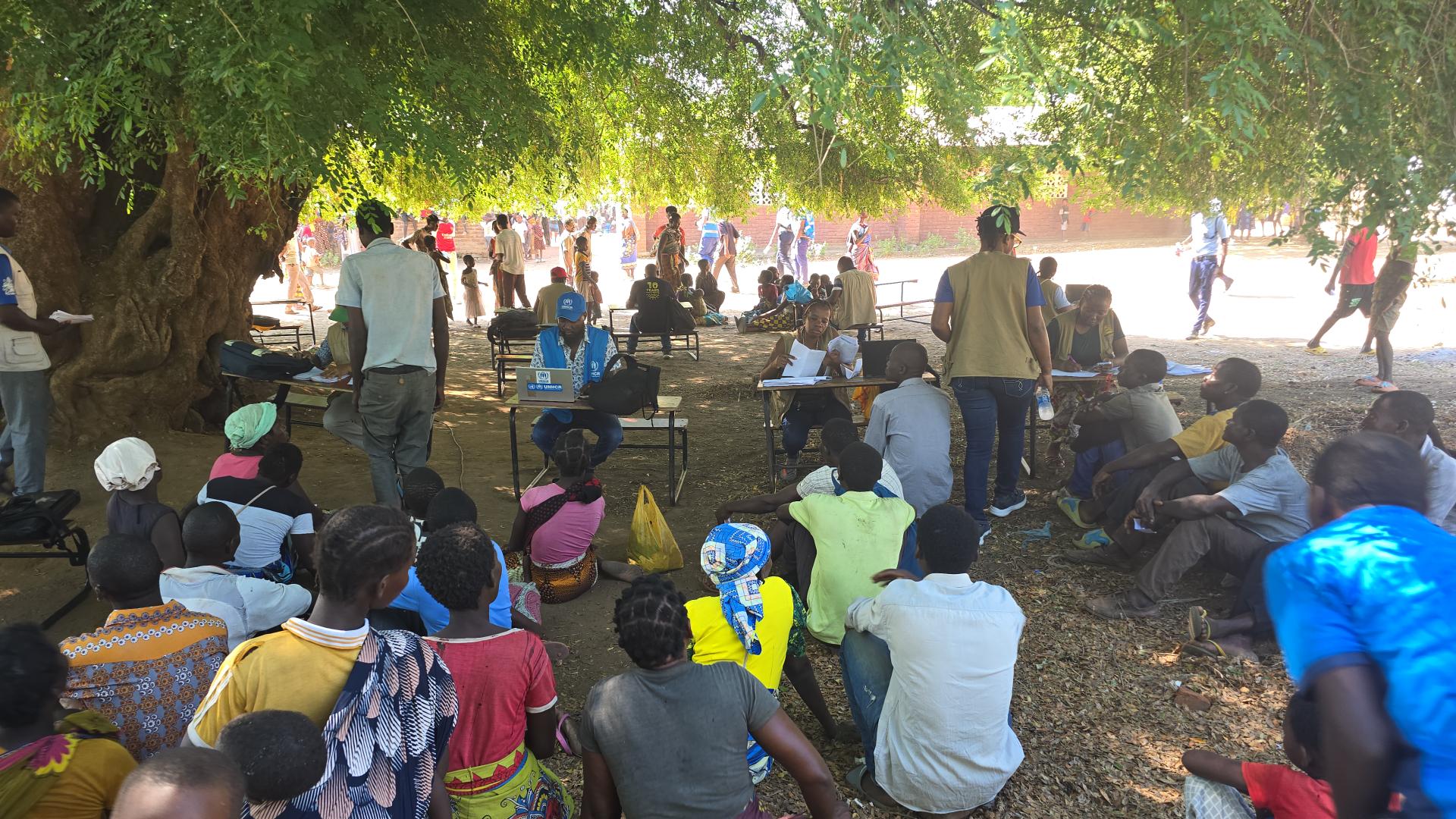“Refugees” or “Migrants”? How word choices affect rights and lives
“Refugees” or “Migrants”? How word choices affect rights and lives

A Venezuelan family walks along the highway that runs parallel to the border with Chile on 3 December, 2021, in Peru's southern region of Tacna.
All people who move between countries deserve full respect for their human rights and dignity. There are, however, different reasons and motivations for people to leave their homes and, consequently, different international legal obligations that arise and apply to those whose lives were, are, or may be at risk should they return.
Refugees are specifically defined and protected in international law. These are individuals who have fled their homes to escape persecution, conflict, violence, serious human rights violations or other events seriously disturbing public order, and who seek safety in another country. As a result, they require “international protection” from another country, where their own country of origin is unable or willing to protect them. They are exercising a fundamental, universal human right – the right to seek and enjoy asylum. According to international refugee law, a person is a refugee – and should be treated as such – as soon as they meet this definition, even if they are still waiting for formal recognition by States or UNHCR.
States have specific obligations towards refugees under international law, including:
- Ensuring refugees can access their territory and seek asylum.
- Not penalizing refugees for crossing borders irregularly (without authorization or required documents) to reach safety. There is nothing illegal about seeking asylum.
- Ensuring the basic human rights of refugees are respected, protected and fulfilled.
- Ensuring that refugees are not expelled or returned (“refouled”) to situations of danger, where their lives or freedom are at risk.
In some countries, refugees may have access to other forms of legal stay, including free movement agreements, work permits or student visas, so may choose not to apply for asylum. However, these other forms of residence do not affect their need for or right to international protection.
Asylum-seekers are individuals who intend to seek, or are awaiting a decision on their request for, international protection. States have an obligation to ensure anyone approaching their borders in need of asylum can access their territory, present their case and have it examined fairly and efficiently. While not every asylum-seeker will ultimately be recognized as a refugee, any individual who presents a claim to asylum must have it examined fairly and efficiently.
Migrants are not as specifically defined under international law, but the term has been used to refer to people who choose to move across borders, not because of any direct threats of persecution, serious harm, or death, but exclusively for other reasons, including for work, education or family reunification. Other complex factors may also be at play, such as escaping hardships due to environmental disasters, famine, or extreme poverty.
Those who leave their countries for these reasons would not ordinarily be in need of international protection, as they – unlike refugees – would continue, in principle, to enjoy the protection of their own country when they are abroad and when they return.
While not fulfilling the criteria of the refugee definition, it may be that migrants require assistance, help and protection of their rights at various points during their journeys. But they would be protected by international human rights law and, in some circumstances, they may also be entitled to protection from return to their country of origin or removal from the host country based on human rights grounds.
Increasingly around the world, “mixed movements” occur where refugees and migrants travel along the same routes across land and sea borders. While their legal status and motivations differ, they may face similar dangers along the way – including violence, abuse and exploitation at the hands of human traffickers, smugglers, criminals, armed elements, other rogue actors, and even border guards or other officials.
While such incidents and experiences taking place on journeys outside countries of origin will not automatically transform a “migrant” into a “refugee” (because refugee status depends on an individual being unable to return home owing to the danger, violence or harm from which they fled), all States must take a humane, rights-based approach when receiving people at their borders. They must ensure people in need of international protection (refugees) can swiftly access asylum, and that victims of human trafficking or human rights abuses – whether refugees or migrants – are rapidly identified and supported.
The international community has long acknowledged the distinction between refugees and migrants – from the codified body of laws developed last century specific to refugees (the 1951 Refugee Convention and its 1967 Protocol as well as other legal texts, such as the 1969 OAU Refugee Convention), to the more recent New York Declaration for Refugees and MigrantsLink is external, and the two distinct frameworks it spurred - the Global Compact on Refugees and the Global Compact for MigrationLink is external.
Conflation has consequences
There is an increasing and troubling trend in public discourse, the media and statistical reporting to use “migrant” as an umbrella term for both migrants and refugees. This conflation is not only inaccurate but can have serious consequences for people who need international protection. Incorrectly referring to refugees and asylum-seekers as migrants (or as “illegal”, “unauthorized” or “undocumented” arrivals):
- Mischaracterizes their specific legal status.
- Hinders their access to specific legal protections – including the right to cross borders to seek and enjoy asylum.
- Diminishes State responsibility – by downplaying the specific obligations States owe them to respect their right to seek asylum without distinction, and regardless of mode of arrival.
- Places their lives and safety at risk – by not identifying them in mixed movements and providing the protection they need, exposing them to renewed harm.
- Dismisses their lived experience and the dangers and risks they have faced from war, conflict and persecution.
- Fuels support for anti-asylum/refugee policies – from denial of access to territory and asylum, pushbacks on land and at sea, violence and ill-treatment at borders, returns to situations of danger (refoulement), and attempts to deflect or “export” asylum-seekers abroad (externalization).
For accuracy, clarity, and to avoid the consequences of conflation, the correct way to acknowledge the specific, critical needs of people in mixed movement situations is to refer to both “refugees and migrants”. This allows for proper identification and responses for those involved, ensuring refugees get access to asylum and vulnerable migrants get the tailored support they need. More broadly, refugees and migrants should collectively be referred to as “individuals”, “people”, or “people on the move”.









